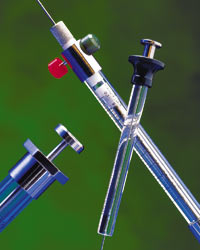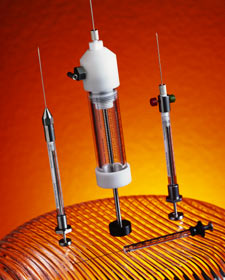| This line of syringes is not 100% gas tight since the seal is essentially ground-glass on ground-glass. Fortunately it is possible to remarkedly
improve its sealing ability by applying vacuum grease or an acceptable wetting agent (water,oil) to the ground-glass area. Depending upon your
application or sampling requirements, you may be able to obtain quite satisfactory performance. |


















